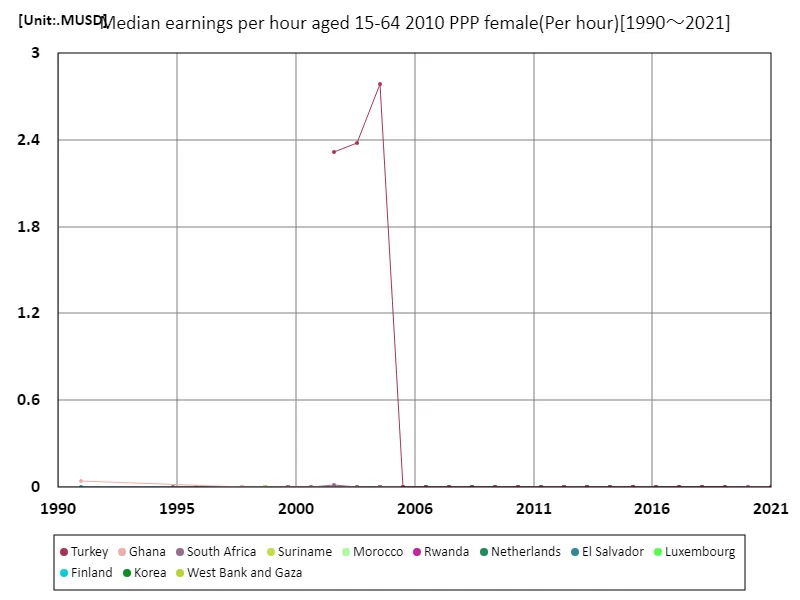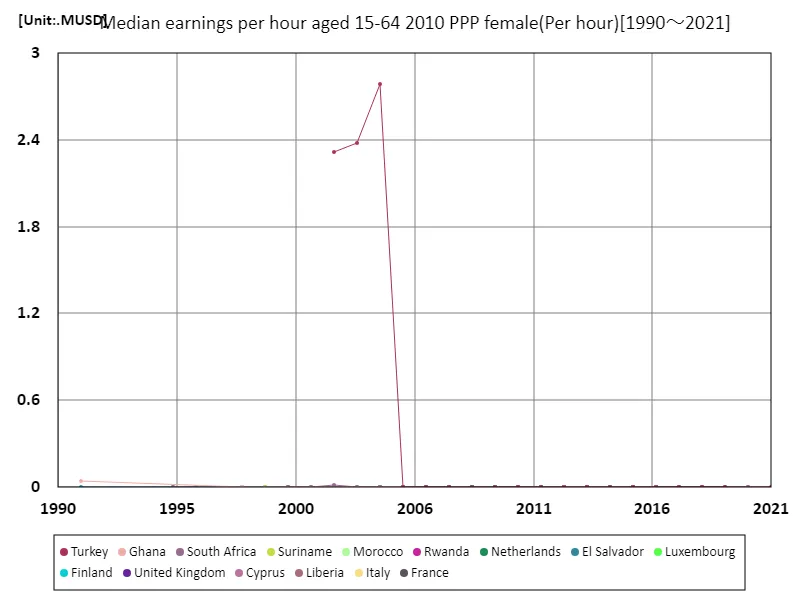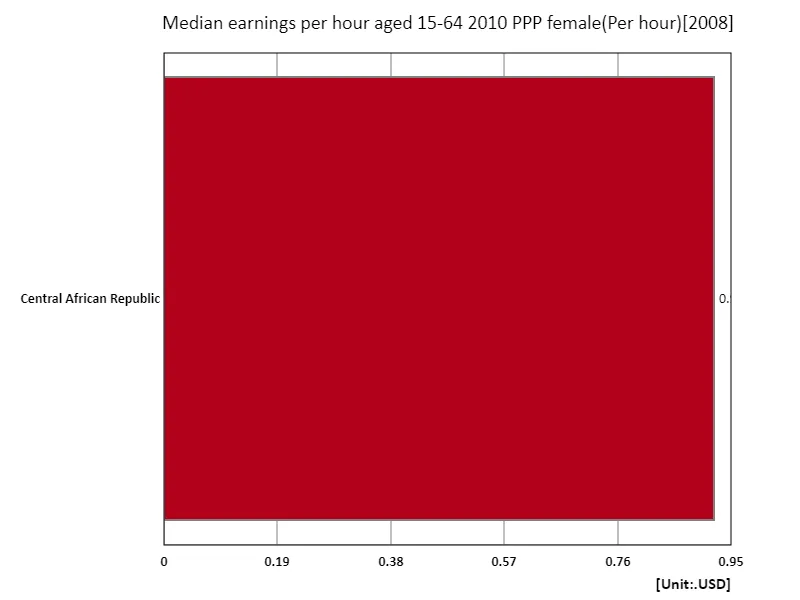- Abstract
- Average hourly wage (women, ages 15-64, 2010 purchasing power parity)
- Average hourly wage (women, ages 15-64, 2010 purchasing power parity) (worldwide)
- Average hourly wage (women, ages 15-64, 2010 purchasing power parity) (nations around the world, latest year)
- Average hourly wage (women, 15-64 years old, 2010 purchasing power parity) (region, latest year)
- Reference
Abstract
It is noteworthy that in 2021 data, the average hourly wage for Rwandan women (aged 15-64) reached MUD 380. This figure can be attributed to Rwanda’s economic growth over the past few decades, which has boosted labour market participation, particularly among women. This is likely due to the implementation of policies and educational programs to expand employment opportunities for women, leading to women becoming more economically independent. Meanwhile, looking at the world as a whole, wage disparities still exist between regions. Compared to developed countries, women’s wages in developing countries are lower, and there are large differences depending on the industry. Wages tend to be low, especially in agriculture and the service industry. Furthermore, education and vocational training play an important role in improving wages. With demand for skills particularly in STEM fields (science, technology, engineering, and mathematics), it is hoped that expanding educational opportunities for women will lead to higher wages. Going forward, countries will be required to continue to reduce the gender wage gap and aim for sustainable economic growth.
Average hourly wage (women, ages 15-64, 2010 purchasing power parity)
Data on average hourly wages for women (aged 15-64) for the period 1991-2021 reflects economic growth and changes in the labour market in each country. In particular, Turkey’s record of 2.79 MUD in 2004 can be attributed to the economic reforms that were implemented at the time and increased participation of women in the labor market. However, by 2021, it had fallen to 163% of its peak, which is thought to be due to economic instability and changes in the employment environment. Throughout this period, female labor force participation rates have trended upward, but wage disparities and occupational bias remain. In particular, there is a large gap in wages between developed and developing countries, and there is also variation by industry. In areas where education and training opportunities are limited, wages often remain low. Additionally, while policies aimed at promoting female employment are being implemented internationally, cultural and social barriers remain and need to be improved. Future challenges will include narrowing the gender wage gap and creating an environment in which women can thrive in a wider variety of occupations. This is expected to result in sustainable economic growth.


The maximum is 2.79MUSD[2004] of Turkey, and the current value is about 163μ%
Average hourly wage (women, ages 15-64, 2010 purchasing power parity) (worldwide)
Data on average hourly wages for women (aged 15-64) between 1991 and 2021 shows shifts in the global economy and changing labor markets. In particular, the 2.79 MUD recorded by Turkey in 2004 was a symbol of economic growth and women’s advancement in society at that time, but it has now fallen to 163 μ% of its peak, which is thought to be due to economic instability and social factors. While female labor force participation rates have increased overall during this period, wage gaps and unequal employment opportunities remain significant issues. In particular, in areas where opportunities for education and vocational training are limited, women’s wages tend to be kept low. There is also a disparity in wages depending on the industry, with women’s wages being particularly low in the service industry and agriculture. Moreover, while international policies aimed at promoting female employment are underway, cultural and social barriers remain and will take time to improve. Future challenges will include correcting the gender wage gap and creating an environment in which women can thrive in a variety of occupations. This is expected to promote sustainable economic growth.


The maximum is 2.79MUSD[2004] of Turkey, and the current value is about 163μ%
Average hourly wage (women, ages 15-64, 2010 purchasing power parity) (nations around the world, latest year)
According to 2021 data, the average hourly wage for women (aged 15-64) is 1.92 USD, with Thailand recording the highest at 4.12 USD. This is thought to be the result of Thailand promoting female labor participation and achieving a certain level of economic growth. The overall total comes to 7.68 USD, highlighting the large differences in wages between countries. Over this period, women’s participation in the labor market has increased steadily, but wage gaps and employment inequality remain issues. In particular, the gap between developed and developing countries is significant, with women’s wages tending to be kept low in developing countries. There is also a large variation in wages depending on the industry, and wages for women working in the service industry and agriculture remain particularly low. It is also clear that educational and vocational training opportunities have a significant impact on wages. As more women enter the STEM field and technical jobs, wages are expected to rise. In the future, it will be necessary to correct the gender wage gap and create an environment in which women can thrive in a variety of occupations. This is expected to result in sustainable economic growth and social equity.


The maximum is 4.12USD of Thailand, the average is 1.92USD, and the total is 7.68USD
Average hourly wage (women, 15-64 years old, 2010 purchasing power parity) (region, latest year)
Data from 2008 shows that the average hourly wage for women (aged 15-64) was 921 MUD, with the Central African Republic recording the highest figure. This figure reflects unusual circumstances, likely influenced by economic uncertainty and the idiosyncrasies of certain industries. The overall mean and total are the same value, highlighting the uniqueness of the data. During this period, there has been an upward trend in female labor market participation around the world, but wage gaps remain a significant issue. Especially in developing countries, wages often remain low due to limited opportunities for education and vocational training. Other issues include gender discrimination in the labor market and wage imbalances in certain industries. To achieve future improvements, it is important to promote women’s education and skill development and expand employment opportunities. Furthermore, policy efforts are needed to address gender wage disparities. It is expected that this will promote women’s economic independence while also realizing sustainable economic growth.


The maximum is 921mUSD of Central African Republic, the average is 921mUSD, and the total is 921mUSD



Comments